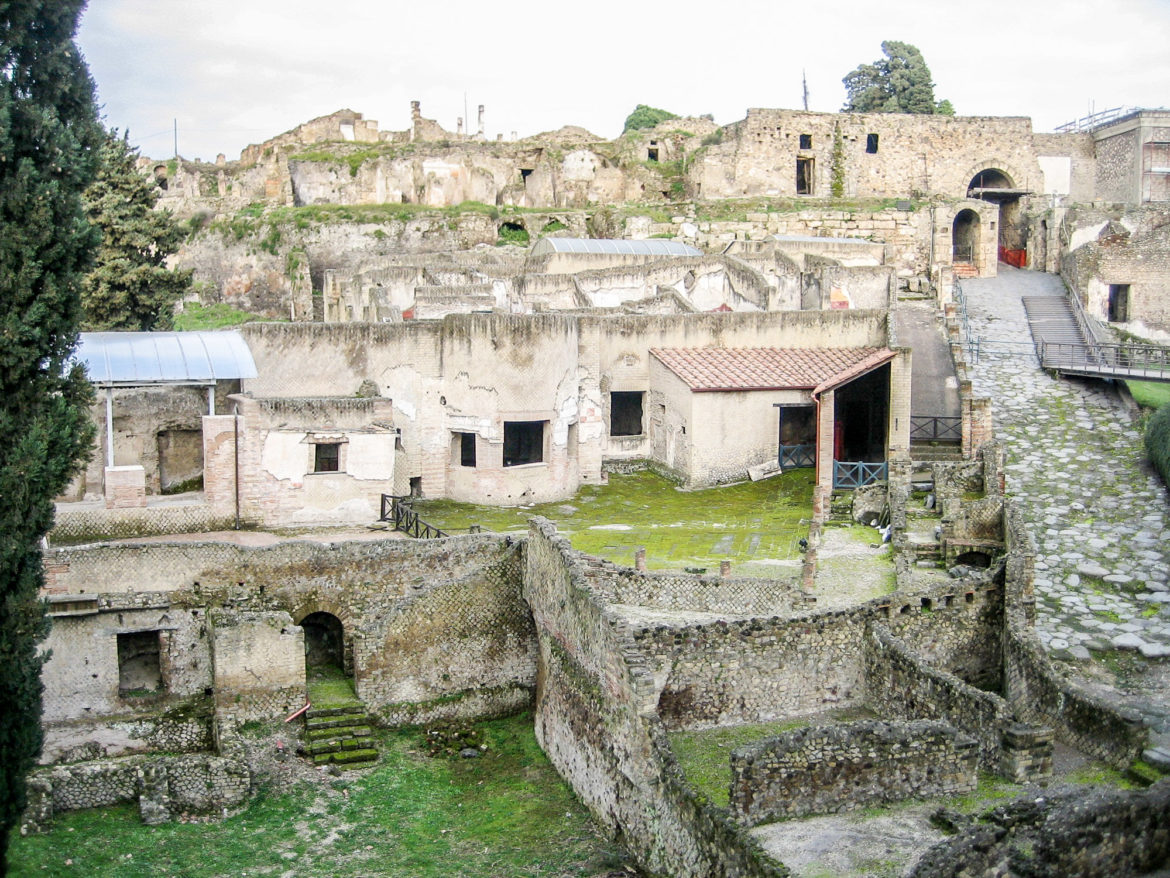A thriving Roman city, Pompeii peacefully existed in the shadow of Mount Vesuvius for hundreds of years.
As early as 6th century BC, the city walls were first constructed. By 80 BC, Pompeii was an official colony – a grand, bustling town filled with private and public buildings. Then one unassuming day in 79AD, that ominous volcano erupted. When it did, a blizzard of ash rained down, burying the entire city and all of its residents.
For centuries, Pompeii laid dormant underground in a silent oblivion. It wasn’t until 1748 that a surveying engineer discovered the secret world. A treasure trove of perfectly preserved artifacts, objects, household goods — even people.
Today, Pompeii is one of Italy’s most important archaeological sites.
Stretched across 35 acres of land, the recent and ongoing renovations have helped create a better visualization of how the city once looked and operated.
After taking the train from Sorrento just over an hour away, we entered the main gate of Porta Marina. This passageway connected the town with the nearby harbor, known as the road leading to the sea. Once inside, the Temple of Apollo greeted us, the most ancient sanctuary in Pompeii, built in 550 BC. An integral part of the Forum, the city’s main square, it represented the economic, religious and political center of the town.
Looking around, it truly is a city preserved in time.
It was an amazing feeling to wander the same stone streets that people walked hundreds of years ago. We viewed the impressive columned facades of a once important government building, a typical atrium home of a wealthy merchant and the cramped rooms of numerous brothels.
As with most Roman cities, the public baths were a main feature. They not only served a functional purpose for getting clean, but acted as a social destination where men and women could (separately) catch up on the latest gossip. Due to the town’s proximity to the sea and the ingenuity of Roman plumbing, the baths were inexpensive to run and heavily used. Apparently, the most popular bath time was in early afternoon. Likely after a hard day’s work and right before happy hour.
Many notable houses offer a glimpse into daily Roman life.
The House of the Tragic Poet is probably the most well-known with its famous mosaic of a black dog. An inscription reads, Cave Canem, translating to “Beware of the Dog.” The House of the Baker, one of 35 bakeries in the city, featured a garden containing a device to grind wheat and a vaulted oven for baking bread. And the House of the Ancient Hunt, with its atrium-style floor plan, immediately signaled the owner’s elevated social status.
Like every Roman city, Pompeii also contained a theatre. Built in the 2nd century BC, the Great Theatre was once covered entirely in marble and could hold approximately 5,000 spectators. Taking a seat, we were amazed that it really wasn’t much different than our modern counterpart today.
One of our favorite aspects was learning about the corner “snack bars.”
The ancient equivalent to fast food, these snack bars were widespread in the city. They were particularly busy at lunchtime when it wasn’t customary to eat at home. Large clay vessels contained various foods, both hot and cold. These vessels were sunk into holes on a brick countertop where guests could “grab and go.” Some snack bars began to resemble restaurants with back rooms where guests could briefly sit and enjoy their meal.
After spending a glorious sunny day wandering the streets with other curious tourists and locals, it was sobering to come across Pompeii’s ash-covered victims. The shapes of human bodies huddled in fear and anguish quickly put things into perspective. These were ordinary people, going about their business, until that one fateful day. It wasn’t the initial blast that did the most damage. Instead, a pyroclastic surge of extremely hot, poisonous gas claimed over 15,000 lives. A recent study stated that most people died of extreme heat (as high as 300°C) within seconds.
A reminder of the fragility of life. And the power of nature.

